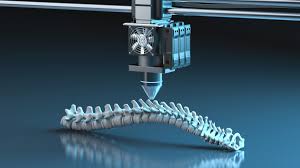In the realm of culinary innovation, 3D food printing stands at the forefront, transforming how we perceive and create food. What was once a concept straight out of science fiction is now becoming a reality, revolutionizing the food industry with its potential to customize, optimize, and revolutionize the way we eat. Let’s explore the evolution of 3D food printing technology, its applications, and the tantalizing possibilities it holds for the future of food.
From Concept to Creation: How 3D Food Printing Works
At its core, 3D food printing utilizes similar principles to traditional 3D printing but with edible ingredients. The process typically involves creating food items layer by layer using specialized food-grade materials, such as pureed ingredients, doughs, or pastes. These materials are loaded into cartridges and precisely deposited onto a build platform according to digital designs generated from computer models.
Printers are equipped with extrusion nozzles or syringes that control the flow of materials, allowing for intricate patterns, shapes, and textures to be formed. Advanced printers can even adjust parameters such as temperature and speed to achieve optimal results for different types of foods, from soft desserts to firm snacks.
Customization and Personalization: Tailoring Food to Preferences
One of the most compelling aspects of 3D food printing is its ability to customize food products according to individual preferences and dietary needs. Imagine being able to create personalized nutrition bars tailored to specific nutritional requirements or dietary restrictions. Athletes might benefit from bars optimized for energy and protein content, while those with allergies could enjoy snacks free from allergens.
Moreover, 3D food printing allows chefs and food designers to experiment with shapes, textures, and flavors that go beyond traditional culinary boundaries. Intricate designs that are difficult to achieve by hand can be effortlessly reproduced, offering a blend of artistic expression and gastronomic innovation.
Applications Across Culinary Domains
The versatility of 3D food printing extends across various culinary domains, from fine dining to healthcare and beyond:
- Fine Dining and Gastronomy: Renowned chefs are exploring 3D printing to create avant-garde dishes that challenge conventional presentation and texture. From elaborately designed desserts to intricately layered entrees, 3D printing opens new avenues for culinary creativity and presentation.
- Healthcare and Nutrition: In healthcare settings, 3D food printing has the potential to revolutionize patient nutrition. Hospitals can customize meals to meet specific dietary requirements or nutritional deficiencies, enhancing patient care and satisfaction.
- Food Sustainability: 3D food printing also holds promise in addressing food sustainability challenges by using ingredients efficiently and reducing food waste. By precisely controlling portion sizes and ingredient distribution, printers can optimize resources and minimize environmental impact.
Challenges and Future Prospects
Despite its potential, 3D food printing faces challenges such as scalability, cost-effectiveness, and regulatory considerations. Current printers are often expensive and require specialized expertise to operate effectively. Additionally, ensuring food safety and maintaining nutritional integrity are critical factors that require ongoing research and development.
Looking ahead, researchers and industry leaders are focusing on overcoming these challenges to unlock the full potential of 3D food printing. Advancements in printer technology, materials science, and software capabilities are expected to drive innovation, making 3D food printing more accessible and impactful across diverse sectors.
Paving the Way for a Culinary Revolution
As 3D food printing continues to evolve, it promises to redefine how we experience and interact with food. From personalized nutrition solutions to creative culinary expressions, the technology offers a tantalizing glimpse into the future of food innovation. While challenges remain, the ongoing research and experimentation in this field are paving the way for a culinary revolution that combines artistry, sustainability, and personalized dining experiences.
In short, 3D food printing represents a transformative force in the food industry, blending cutting-edge technology with culinary artistry to create a new era of gastronomic possibilities. As the technology advances and adoption grows, the future of food looks increasingly customized, sustainable, and deliciously innovative.










